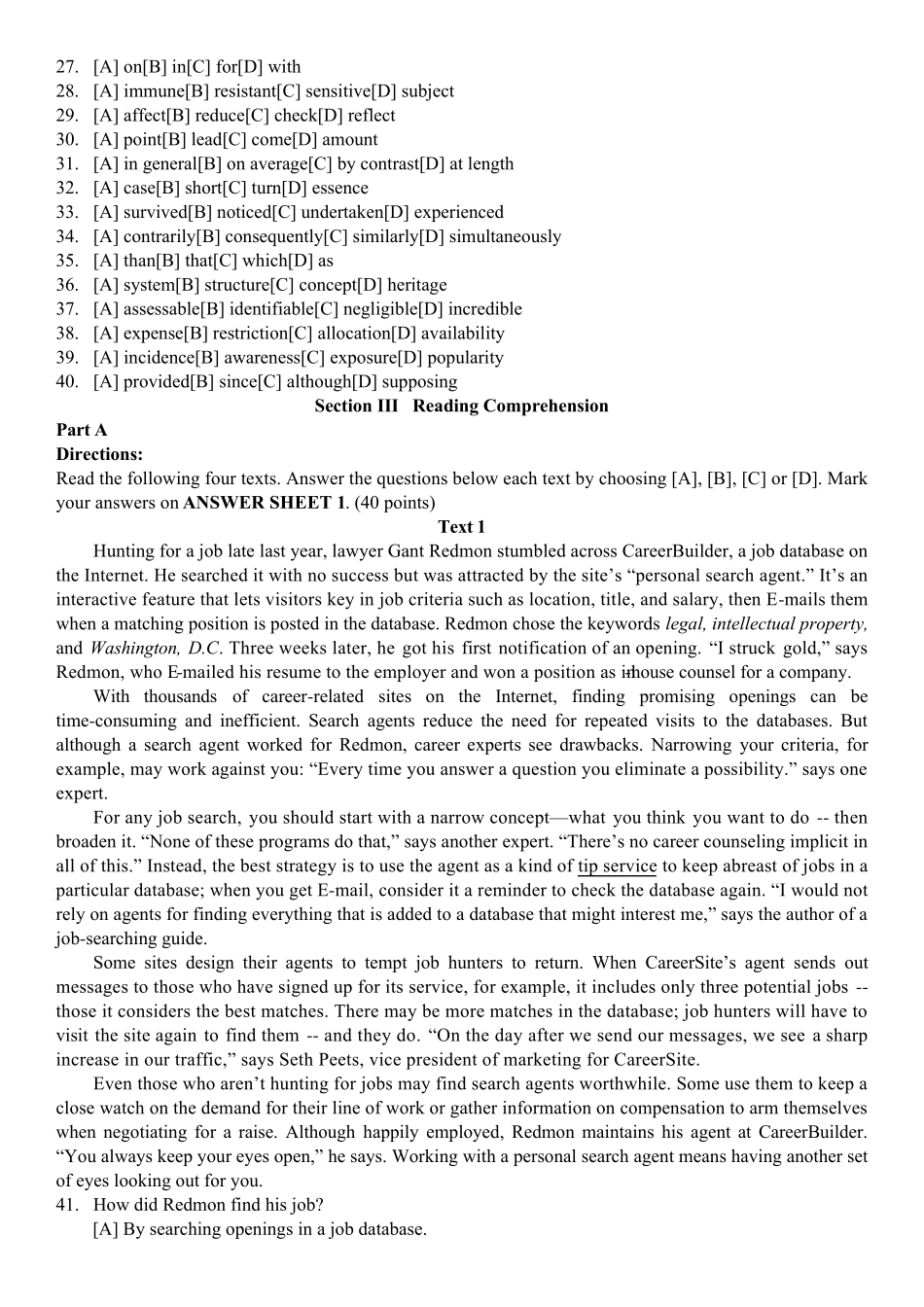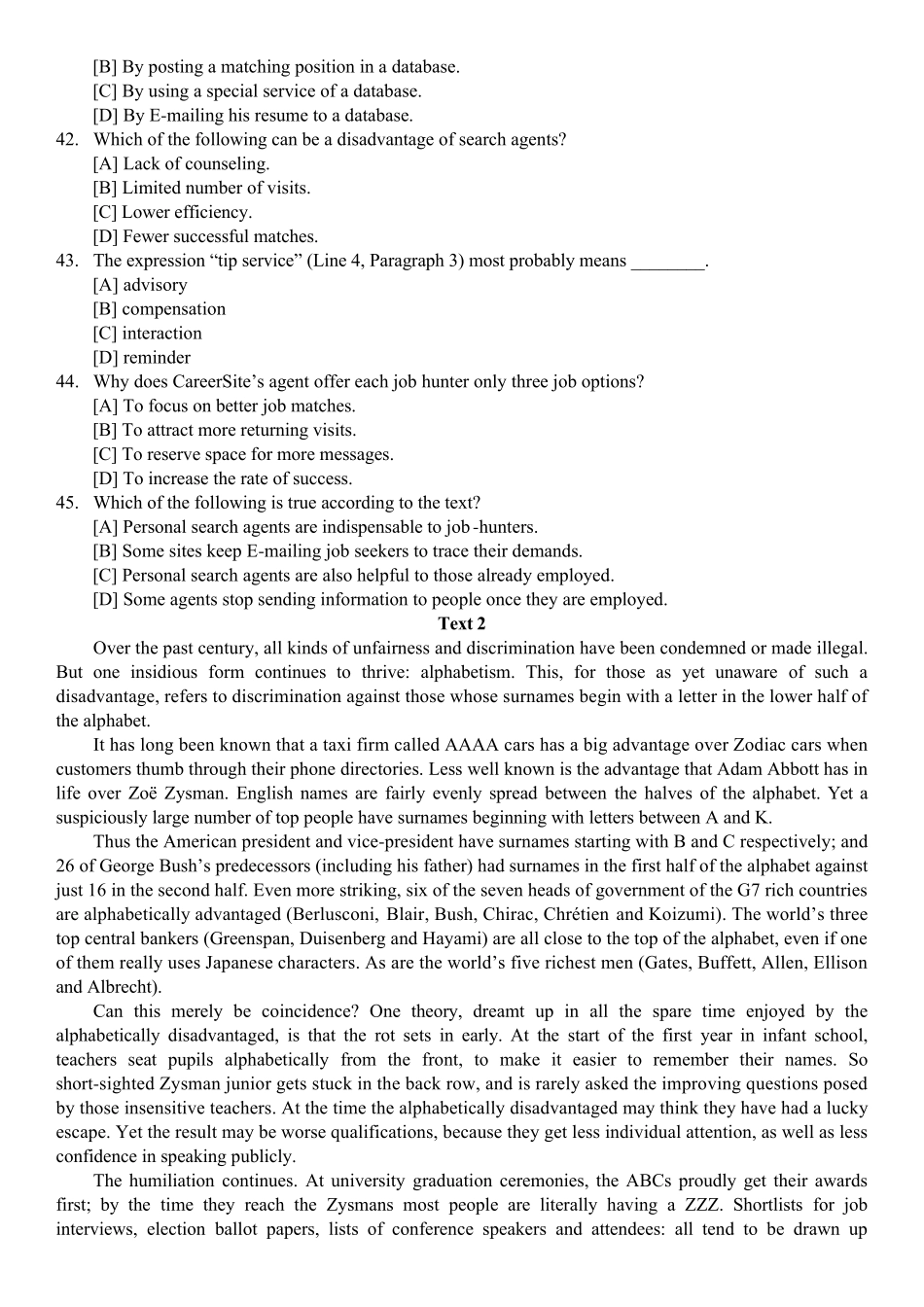2004 年 全 国 硕 士 研 究 生 入 学 统 一考试英语试题 Section II Use of English Directions: Read the following text. Choose the best word (s) for each numbered blank and mark [A], [B], [C] or [D] on ANSWER SHEET 1. (10 points) Many theories concerning the causes of juvenile delinquency (crimes committed by young people) focus either on the individual or on society as the major contributing influence. Theories 21 on the individual suggest that children engage in criminal behavior 22 they were not sufficiently penalized for previous misdeeds or that they have learned criminal behavior through 23 with others. Theories focusing on the role of society suggest that children commit crimes in 24 to their failure to rise above their socioeconomic status, 25 as a rejection of middle-class values. Most theories of juvenile delinquency have focused on children from disadvantaged families, 26 the fact that children from wealthy homes also commit crimes. The latter may commit crimes 27 lack of adequate parental control. All theories, however, are tentative and are 28 to criticism. Changes in the social structure may indirectly 29 juvenile crime rates. For example, changes in the economy that 30 to fewer job opportunities for youth and rising unemployment 31 make gainful employment increasingly difficult to obtain. The resulting discontent may in 32 lead more youths into criminal behavior. Families have also 33 changes these years. More families consist of one-parent households or two working parents; 34, children are likely to have less supervision at home 35 was common in the traditional family 36. This lack of parental supervision is thought to be an influence on juvenile crime rates. Other 37 causes of...


